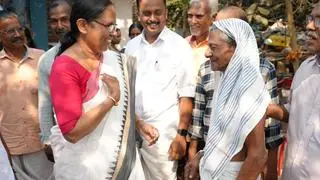Rusted railings of completed apartments, eroded torsion steel bars, stalled cranes, ready-mix concrete plants, unpacked cooling and power back-up units lying unattended, and hardly any human.
This is Amaravati.
As one drives through the proposed capital city project of Andhra Pradesh on the banks of the Krishna, one is hit hard by how deserted and desolate it looks. Once a place teeming with workers and buzzing with activity, it now looks like a ghost town.
Ambitious project
Where thousands of workers were executing one of the nation’s most ambitious greenfield capital city projects, things have come to a standstill following a regime change in the State.
Some of the country’s leading construction companies and builders (L&T, Shapoorji Pallonji and NCC), and realty consulting firms such as CBRE have their billboards at sites across the city. While the hoardings and machines still dot sites, there is no activity.
Close to the stalled construction area, the Andhra Pradesh High Court, part of the new capital city, is busy delivering justice.
But there is hardly any activity in the vicinity and the facilities for court employees are inadequate.
The foundation for Amaravati was laid in October 2015 by Prime Minister Narendra Modi and, three years later, construction work was initiated by then Chief Minister N Chandrababu Naidu. The capital city was envisaged as a ₹2-lakh-crore project, of which about ₹10,000 crore had already been invested.
However, following the Assembly elections earlier this year, YS Jagan Mohan Reddy of the YSRCP became the Chief Minister. Within weeks of assuming office, he directed that all works in the capital region be halted and contracts reviewed. In fact, he has been non-committal on whether or not Amaravati will be the new AP capital.
Exit of partners
The World Bank and AIIB, which had jointly planned to invest $300 million, quit the project post the elections. The Singapore government, which was originally a project partner, agreed to exit it.
Sand and steel stocked at the site have gone missing, said some locals on the condition of anonymity.
Pilferage
There is a huge shortage of sand in the area, they added.
Post monsoon, grass has grown all around the equipment, and tin sheets and steel bars have rusted.
The residential buildings of IAS and IPS officers, judges and NGOs are at various stages of construction. While some have almost been completed, with the interior done, others are at 70-90 per cent completion stage. Many are stuck at the foundation-and-stilt stage.
Will Amaravati ever take off as a capital city?







Comments
Comments have to be in English, and in full sentences. They cannot be abusive or personal. Please abide by our community guidelines for posting your comments.
We have migrated to a new commenting platform. If you are already a registered user of TheHindu Businessline and logged in, you may continue to engage with our articles. If you do not have an account please register and login to post comments. Users can access their older comments by logging into their accounts on Vuukle.